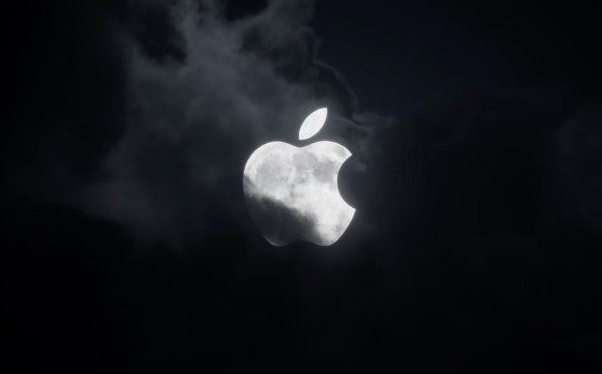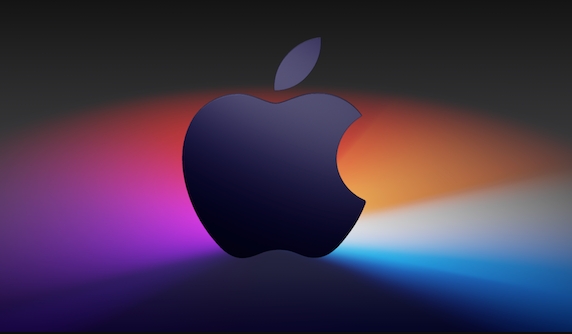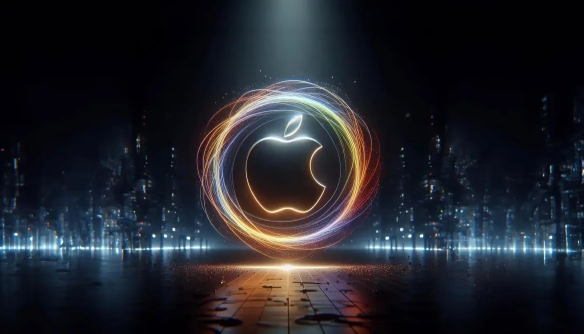How to create a macOS bootable installer in Windows?
Jul 13, 2025 am 01:10 AMMaking a macOS bootable installer on Windows is not officially supported, but can be implemented through third-party tools. First, prepare a USB drive above 16GB, macOS installation image (.dmg/.iso) and tools such as TransMac or balenaEtcher; secondly, use TransMac to right-click the USB drive and select "Restore with Disk Image" to write the image, or use balenaEtcher to select ISO files and target disk to write; finally note that the USB drive must be in GPT format, and install Hackintosh, you also need to manually configure EFI boot and use boot tools to bypass restrictions.

Creating a macOS bootable installer (Bootable Installer) is not directly supported on Windows, because Apple's official tools such as the "macOS Installation Assistant" only run on macOS systems. But if you really need to make a macOS boot disk on a Windows computer, for example, in order to install Hackintosh, you can still achieve it through some workarounds.

Here are some common and feasible practices:

Prepare the tools and files you need
To start making a macOS boot disk, you need to prepare the following things:
- A USB drive of at least 16GB (high-speed USB drive is recommended to increase writing speed)
- A Windows computer
- macOS installation image (usually a .dmg or .iso file, or an installation package extracted by .pkg)
- A tool that can operate on Windows, for example:
- TransMac (paid but simple)
- balenaEtcher (free, suitable for writing to mirrors)
- Or command line tools such as
dd(via WSL)
Note: The downloaded macOS image must be ensured to be reliable, otherwise it may contain malware or will not boot properly.

Use TransMac to create a macOS boot disk
This is one of the most convenient ways to do on Windows right now. TransMac supports writing .dmg or .iso files of macOS directly to USB flash drives and automatically set to bootable format.
The steps are as follows:
- Insert the USB flash drive and back up the data in it (which will be formatted)
- Open TransMac, right-click your USB drive, and select “Restore with Disk Image”
- Find your prepared macOS installation image (.dmg or .iso file)
- Wait for the write to be completed, this process may take 10 to 20 minutes, depending on the USB speed
Once completed, your USB drive becomes a macOS boot disk that can be used to install Hackintosh.
Write to ISO images using balenaEtcher
If you get the ISO image file of macOS, you can use balenaEtcher to write it:
- Download and install balenaEtcher
- Open the program, click "Flash from file" and select your macOS ISO file
- Select the target USB drive
- Click "Flash!" to start writing
This method is suitable for situations where ISO has been extracted, but not all macOS ISOs can be used directly for startup, and some require additional bootloaders.
Additional Notes
Although the above method can help you make a macOS boot disk on Windows, there are several details that are easily overlooked:
- The USB drive must be formatted as a GUID Partition Table (GPT) to be correctly recognized by macOS. This step is usually done automatically by the tool, but in some cases it needs to be manually set.
- If you are using Hackintosh to install, in addition to the boot disk itself, you also need to add the correct EFI boot configuration. This part usually requires manual editing of the contents of the EFI partition
- The macOS installer won't be allowed to run on non-Apple hardware by default, so you may also need to patch or use the Clover/OpenCore boot tool to bypass the restrictions
Basically that's it. Although you cannot create a macOS boot disk natively like on macOS, this can also be done on Windows with the help of third-party tools. As long as the mirror is fine and the tools are used correctly, the success rate is still very high.
The above is the detailed content of How to create a macOS bootable installer in Windows?. For more information, please follow other related articles on the PHP Chinese website!

Hot AI Tools

Undress AI Tool
Undress images for free

Undresser.AI Undress
AI-powered app for creating realistic nude photos

AI Clothes Remover
Online AI tool for removing clothes from photos.

Clothoff.io
AI clothes remover

Video Face Swap
Swap faces in any video effortlessly with our completely free AI face swap tool!

Hot Article

Hot Tools

Notepad++7.3.1
Easy-to-use and free code editor

SublimeText3 Chinese version
Chinese version, very easy to use

Zend Studio 13.0.1
Powerful PHP integrated development environment

Dreamweaver CS6
Visual web development tools

SublimeText3 Mac version
God-level code editing software (SublimeText3)

Hot Topics
 Where is the pycharm interpreter?
May 23, 2025 pm 10:09 PM
Where is the pycharm interpreter?
May 23, 2025 pm 10:09 PM
Setting the location of the interpreter in PyCharm can be achieved through the following steps: 1. Open PyCharm, click the "File" menu, and select "Settings" or "Preferences". 2. Find and click "Project:[Your Project Name]" and select "PythonInterpreter". 3. Click "AddInterpreter", select "SystemInterpreter", browse to the Python installation directory, select the Python executable file, and click "OK". When setting up the interpreter, you need to pay attention to path correctness, version compatibility and the use of the virtual environment to ensure the smooth operation of the project.
 The difference between programming in Java and other languages ??Analysis of the advantages of cross-platform features of Java
May 20, 2025 pm 08:21 PM
The difference between programming in Java and other languages ??Analysis of the advantages of cross-platform features of Java
May 20, 2025 pm 08:21 PM
The main difference between Java and other programming languages ??is its cross-platform feature of "writing at once, running everywhere". 1. The syntax of Java is close to C, but it removes pointer operations that are prone to errors, making it suitable for large enterprise applications. 2. Compared with Python, Java has more advantages in performance and large-scale data processing. The cross-platform advantage of Java stems from the Java virtual machine (JVM), which can run the same bytecode on different platforms, simplifying development and deployment, but be careful to avoid using platform-specific APIs to maintain cross-platformity.
 How to stop Microsoft Edge automatic updates
May 21, 2025 am 10:12 AM
How to stop Microsoft Edge automatic updates
May 21, 2025 am 10:12 AM
How to stop Microsoft Edge Automatically Update Microsoft Edge is the default browser that comes with Windows 11. Earlier, the Edge browser received updates as the Windows operating system was updated. However, the Edge browser based on Chromium has changed that. The browser will now automatically update in the background without your knowledge. In this article, we will explain how to stop automatic Microsoft Edge updates in Windows 11 and macOS. Related: How to disable automatic updates in Google Chrome? Check for automatic edge updates Chromium-based Edge vs. Goo based on Chromium backend code
 Commands and configurations for starting Apache service in macOS system
May 16, 2025 pm 10:00 PM
Commands and configurations for starting Apache service in macOS system
May 16, 2025 pm 10:00 PM
The command to start the Apache service on macOS is sudoapachectlstart, and the configuration file is located in /etc/apache2/. The main steps include: 1. Edit the httpd.conf file, modify the Listen port such as Listen8080; 2. Adjust the DocumentRoot path to the personal directory such as /Users/your_username/Sites, and update the corresponding permission settings; 3. Use the sudoapachectlgraceful command to restart Apache to ensure that the configuration takes effect; 4. Enable the mod_deflate module to compress data to improve page loading speed.
 MySQL installation tutorial teach you step by step the detailed steps for installing and configuration of mySQL step by step
May 23, 2025 am 06:09 AM
MySQL installation tutorial teach you step by step the detailed steps for installing and configuration of mySQL step by step
May 23, 2025 am 06:09 AM
The installation and configuration of MySQL can be completed through the following steps: 1. Download the installation package suitable for the operating system from the official website. 2. Run the installer, select the "Developer Default" option and set the root user password. 3. After installation, configure environment variables to ensure that the bin directory of MySQL is in PATH. 4. When creating a user, follow the principle of minimum permissions and set a strong password. 5. Adjust the innodb_buffer_pool_size and max_connections parameters when optimizing performance. 6. Back up the database regularly and optimize query statements to improve performance.
 Which is better, uc browser or qq browser? In-depth comparison and evaluation of uc and qq browsers
May 22, 2025 pm 08:33 PM
Which is better, uc browser or qq browser? In-depth comparison and evaluation of uc and qq browsers
May 22, 2025 pm 08:33 PM
Choosing UC browser or QQ browser depends on your needs: 1. UC browser is suitable for users who pursue fast loading and rich entertainment functions; 2. QQ browser is suitable for users who need stability and seamless connection with Tencent products.
 How to update the system's own software
May 19, 2025 pm 06:48 PM
How to update the system's own software
May 19, 2025 pm 06:48 PM
Updating the software that comes with macOS is simple and important because it can fix bugs, improve performance, bring new features and security improvements. You can update through the "Software Update" option in "System Settings" or "System Preferences" and follow the prompts. If you encounter problems, try restarting your Mac or checking your network connection, and the Apple Support page also provides a solution. It is recommended to keep the system up to date, back up data before update, and ensure Wi-Fi and sufficient storage space. Update details can be viewed on Apple's official website.
 How to adjust screen brightness on macOS
May 16, 2025 pm 08:39 PM
How to adjust screen brightness on macOS
May 16, 2025 pm 08:39 PM
Adjusting screen brightness on macOS can be fine-tuned using the brightness adjustment keys on the keyboard or through system preferences. 1. Press the Sun icon keys on the F1 and F2 keys to quickly adjust the brightness. 2. Drag the slider in the "Display" option in "System Preferences" to make minor adjustments. 3. Enable the "Auto-adjust brightness" function to make the brightness change with the ambient light. 4. Use the "Night View" mode to reduce blue light to protect your eyes. 5. Developers can use AppleScript to automate brightness adjustments.






